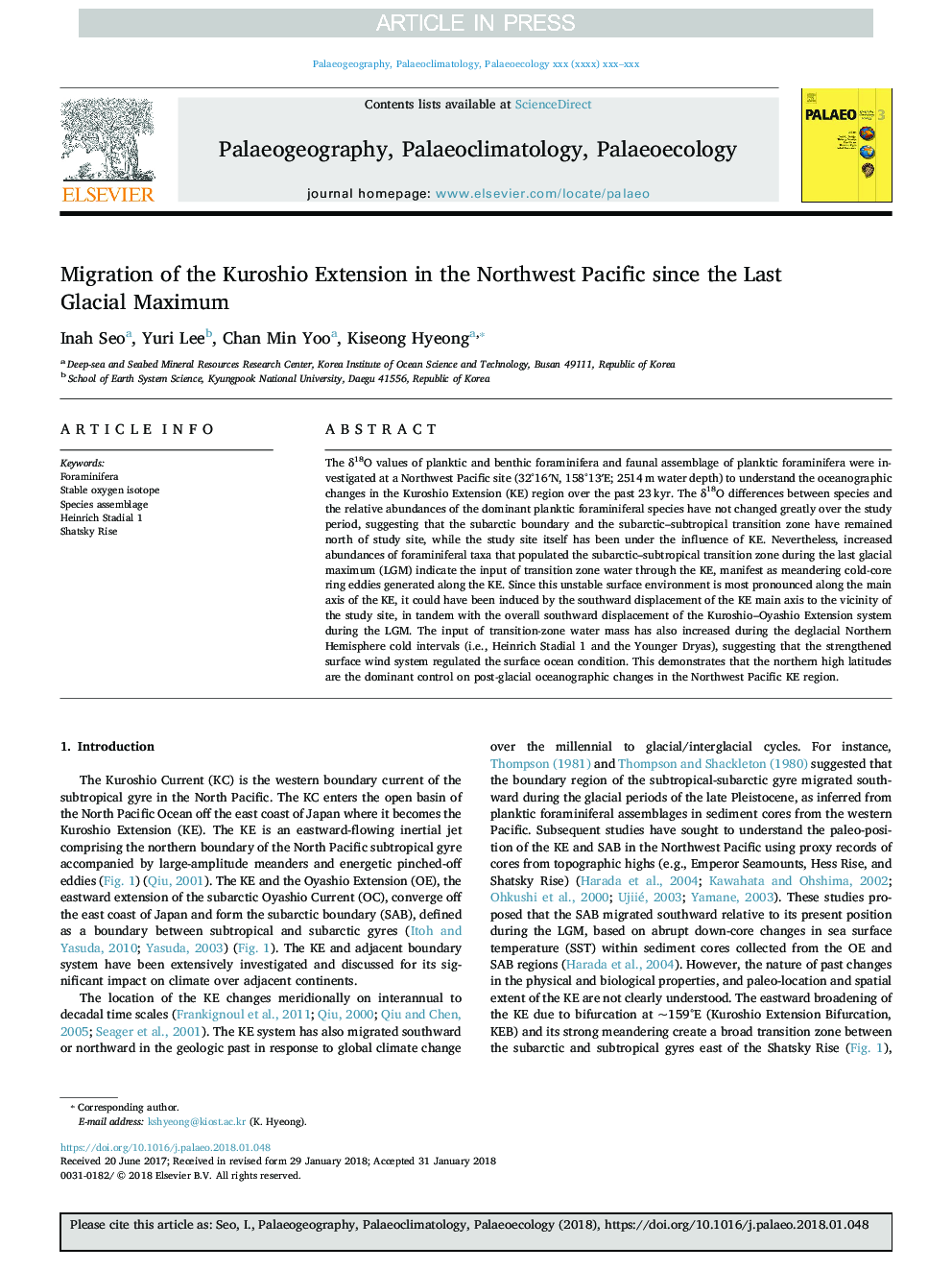| Article ID | Journal | Published Year | Pages | File Type |
|---|---|---|---|---|
| 8868306 | Palaeogeography, Palaeoclimatology, Palaeoecology | 2018 | 9 Pages |
Abstract
The δ18O values of planktic and benthic foraminifera and faunal assemblage of planktic foraminifera were investigated at a Northwest Pacific site (32°16â²N, 158°13â²E; 2514â¯m water depth) to understand the oceanographic changes in the Kuroshio Extension (KE) region over the past 23â¯kyr. The δ18O differences between species and the relative abundances of the dominant planktic foraminiferal species have not changed greatly over the study period, suggesting that the subarctic boundary and the subarctic-subtropical transition zone have remained north of study site, while the study site itself has been under the influence of KE. Nevertheless, increased abundances of foraminiferal taxa that populated the subarctic-subtropical transition zone during the last glacial maximum (LGM) indicate the input of transition zone water through the KE, manifest as meandering cold-core ring eddies generated along the KE. Since this unstable surface environment is most pronounced along the main axis of the KE, it could have been induced by the southward displacement of the KE main axis to the vicinity of the study site, in tandem with the overall southward displacement of the Kuroshio-Oyashio Extension system during the LGM. The input of transition-zone water mass has also increased during the deglacial Northern Hemisphere cold intervals (i.e., Heinrich Stadial 1 and the Younger Dryas), suggesting that the strengthened surface wind system regulated the surface ocean condition. This demonstrates that the northern high latitudes are the dominant control on post-glacial oceanographic changes in the Northwest Pacific KE region.
Related Topics
Physical Sciences and Engineering
Earth and Planetary Sciences
Earth-Surface Processes
Authors
Inah Seo, Yuri Lee, Chan Min Yoo, Kiseong Hyeong,
